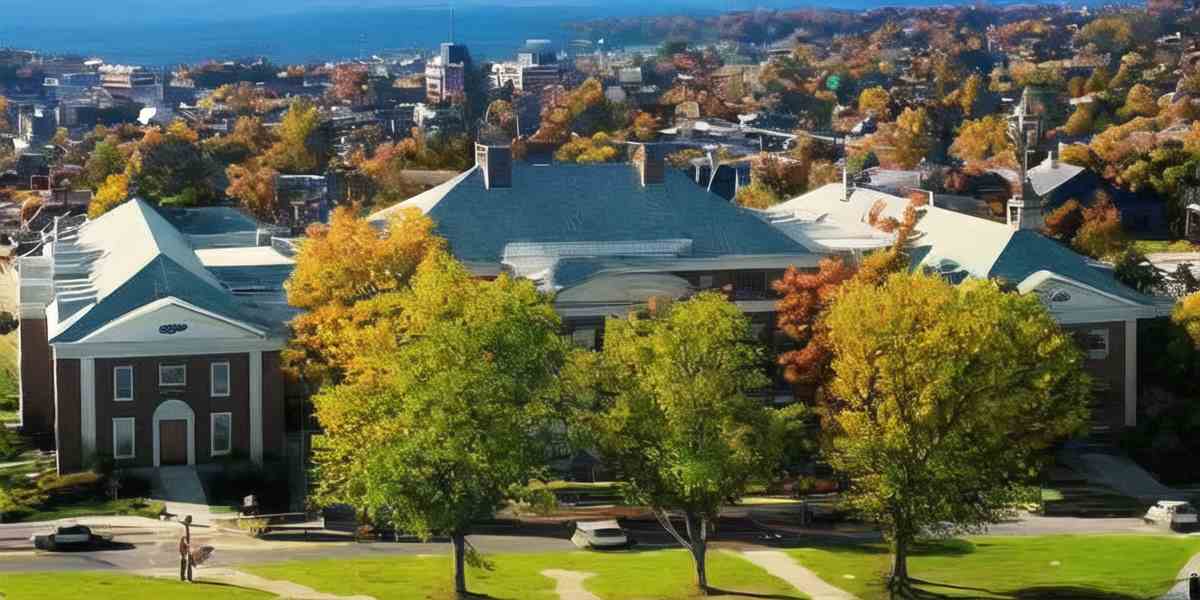University of Vermont
2024 USNews Best Colleges Ranking: 133(↓12) (Click for schools/majors ranking)
Abbreviation/Alias: UVM
School Characteristics: Private (4-Years)
Calendar systerm: Semester
Religious Affiliation: Not applicable
School Chief: Suresh Garimella (President)
Website: www.uvm.edu/; Phone: 8026563131
Location: 85 S Prospect St, Burlington, VT, 005405-0160

University of Vermont Important Facts
University of Vermont Degrees and Majors
University of Vermont Ranking and Admission
University of Vermont Admission Score Requires
*Numbers at left represent SAT/ACT submitting percentage, numbers on blue blocks represent 25%-75% admission scores
**Drag green block to check data for different years, click blue block to check scores trends
University of Vermont Students Diversity
University of Vermont Students Age Distribution
University of Vermont International Students Trends
University of Vermont Campus and Safety
Nearby Top Colleges
Campus Safety
Reference
- University of Vermont Official Website
- USNews Best Colleges Ranking
- USNews Bset Global Universities Ranking
- THE World University Ranking
- QS World University Ranking
- ARWU World University Ranking
- US Department of Education College Scorecard
- National Center for Education Statistics
- Forward Pathway US College Ranking Database
 University of Vermont Important Facts Trends
University of Vermont Important Facts Trends
 University of Vermont degrees/majors
University of Vermont degrees/majors
University of Vermont major details
*Depends on whether majors have graduates in 2022 or not, Yes / No
**Move mouse on can check deitaled graudates number, click for major detailed information
***Due to privacy policy, graduate salaries are not shown for some majors that has few gradautes
| Major | Graduate Salary | Under | Master | Doctor |
|---|---|---|---|---|
| Health and Wellness, General. | - | |||
| Communication Sciences and Disorders, General. | $55,674-$60,252 | |||
| Medical Radiologic Technology/Science - Radiation Therapist. | $61,747 | |||
| Athletic Training/Trainer. | $61,747 | |||
| Clinical Laboratory Science/Medical Technology/Technologist. | $68,552 | |||
| Medicine. | $94,191 | |||
| Medical Science/Scientist. | - | |||
| Public Health, General. | - | |||
| Behavioral Aspects of Health. | - | |||
| Physical Therapy/Therapist. | $72,170 | |||
| Dietetics/Dietitian. | $53,534 | |||
| Registered Nursing/Registered Nurse. | $70,358-$102,077 | |||
| Nursing Science. | $70,358-$102,077 |
| Major | Graduate Salary | Under | Master | Doctor |
|---|---|---|---|---|
| Biology/Biological Sciences, General. | $58,369 | |||
| Biochemistry. | $60,538 | |||
| Molecular Biology. | $60,538 | |||
| Botany/Plant Biology. | - | |||
| Microbiology, General. | - | |||
| Zoology/Animal Biology. | $31,077 | |||
| Wildlife Biology. | $31,077 | |||
| Pathology/Experimental Pathology. | - | |||
| Pharmacology. | - | |||
| Neuroscience. | $40,568 | |||
| Biological and Biomedical Sciences, Other. | - |
| Major | Graduate Salary | Under | Master | Doctor |
|---|---|---|---|---|
| Business Administration and Management, General. | $72,315 | |||
| Accounting. | $83,073 | |||
| Social Entrepreneurship. | $56,123 |
| Major | Graduate Salary | Under | Master | Doctor |
|---|---|---|---|---|
| Natural Resources/Conservation, General. | $44,131 | |||
| Environmental Studies. | $44,131 | |||
| Environmental Science. | $44,131 | |||
| Environmental/Natural Resource Recreation and Tourism. | - | |||
| Forestry, General. | - |
| Major | Graduate Salary | Under | Master | Doctor |
|---|---|---|---|---|
| Engineering, General. | - | |||
| Bioengineering and Biomedical Engineering. | - | |||
| Civil Engineering, General. | $73,638 | |||
| Electrical and Electronics Engineering. | $89,425 | |||
| Environmental/Environmental Health Engineering. | $61,980 | |||
| Mechanical Engineering. | $75,683 | |||
| Industrial Engineering. | - |
| Major | Graduate Salary | Under | Master | Doctor |
|---|---|---|---|---|
| Anthropology, General. | $39,318 | |||
| Economics, General. | $51,595 | |||
| Development Economics and International Development. | $51,595 | |||
| Geography. | - | |||
| Political Science and Government, General. | $51,935 | |||
| Sociology, General. | $42,751 |
| Major | Graduate Salary | Under | Master | Doctor |
|---|---|---|---|---|
| Psychology, General. | $42,915 |
| Major | Graduate Salary | Under | Master | Doctor |
|---|---|---|---|---|
| Systems Science and Theory. | - | |||
| Historic Preservation and Conservation, General. | - | |||
| Nutrition Sciences. | $52,207 | |||
| International/Globalization Studies. | $48,219 | |||
| Sustainability Studies. | - | |||
| Data Science, General. | - | |||
| Multi-/Interdisciplinary Studies, Other. | - |
| Major | Graduate Salary | Under | Master | Doctor |
|---|---|---|---|---|
| Computer Systems Analysis/Analyst. | - | |||
| Computer Science. | $72,225 |
| Major | Graduate Salary | Under | Master | Doctor |
|---|---|---|---|---|
| Agriculture, General. | - | |||
| Animal Sciences, General. | $35,250 | |||
| Plant Sciences, General. | - | |||
| Agronomy and Crop Science. | - | |||
| Horticultural Science. | - |
| Major | Graduate Salary | Under | Master | Doctor |
|---|---|---|---|---|
| Mathematics, General. | $56,725-$64,745 | |||
| Statistics, General. | - |
| Major | Graduate Salary | Under | Master | Doctor |
|---|---|---|---|---|
| Public Administration. | - | |||
| Social Work. | $43,780-$57,703 |
| Major | Graduate Salary | Under | Master | Doctor |
|---|---|---|---|---|
| English Language and Literature, General. | $38,271 |
| Major | Graduate Salary | Under | Master | Doctor |
|---|---|---|---|---|
| Dance, General. | - | |||
| Drama and Dramatics/Theatre Arts, General. | - | |||
| Film/Cinema/Media Studies. | - | |||
| Fine/Studio Arts, General. | $35,298 | |||
| Art History, Criticism and Conservation. | $35,298 | |||
| Music, General. | - |
| Major | Graduate Salary | Under | Master | Doctor |
|---|---|---|---|---|
| Sports, Kinesiology, and Physical Education/Fitness, General. | $44,105 | |||
| Exercise Science and Kinesiology. | $44,105 |
| Major | Graduate Salary | Under | Master | Doctor |
|---|---|---|---|---|
| Communication Management and Strategic Communications. | $49,967 | |||
| Public Relations, Advertising, and Applied Communication, Other. | $49,967 |
| Major | Graduate Salary | Under | Master | Doctor |
|---|---|---|---|---|
| Chemistry, General. | - | |||
| Geology/Earth Science, General. | - | |||
| Physics, General. | - | |||
| Materials Science. | - |
| Major | Graduate Salary | Under | Master | Doctor |
|---|---|---|---|---|
| Linguistics. | - | |||
| Chinese Language and Literature. | - | |||
| Japanese Language and Literature. | - | |||
| Russian Language and Literature. | - | |||
| German Language and Literature. | - | |||
| French Language and Literature. | - | |||
| Spanish Language and Literature. | - | |||
| Classics and Classical Languages, Literatures, and Linguistics, General. | - |
| Major | Graduate Salary | Under | Master | Doctor |
|---|---|---|---|---|
| History, General. | $43,718 |
| Major | Graduate Salary | Under | Master | Doctor |
|---|---|---|---|---|
| Philosophy. | - | |||
| Religion/Religious Studies. | - |
| Major | Graduate Salary | Under | Master | Doctor |
|---|---|---|---|---|
| Human Development and Family Studies, General. | - |
| Major | Graduate Salary | Under | Master | Doctor |
|---|---|---|---|---|
| Latin American and Caribbean Studies. | - | |||
| Women's Studies. | - |
| Major | Graduate Salary | Under | Master | Doctor |
|---|---|---|---|---|
| Liberal Arts and Sciences/Liberal Studies. | - |
 University of Vermont Schools/Majors Ranking
University of Vermont Schools/Majors Ranking
Under Ranking (2024)
World University Ranking
*Rankings have been updated to 2025USNews schools/majors ranking, rankings are for reference only
*numbers in bracket represent rankings change compare to last version
 University of Vermont Varsity Athletes
University of Vermont Varsity Athletes
| NCAA Division I without football | MEN | WOMEN |
|---|---|---|
| Track and Field and Cross Country (combined) | 118 | 164 |
| Lacrosse | 53 | 36 |
| Soccer | 28 | 32 |
| Ice Hockey | 30 | 25 |
| Swimming and Diving (combined) | - | 42 |
| Basketball | 17 | 16 |
| Skiing | 15 | 15 |
| Field Hockey | - | 23 |
| NCAA Division I without football | MEN | WOMEN |
|---|---|---|
| All Track Combined | 96 | 149 |
| Lacrosse | 57 | 33 |
| Soccer | 29 | 31 |
| Ice Hockey | 29 | 24 |
| Swimming and Diving | - | 31 |
| Basketball | 16 | 13 |
| Skiing | 13 | 13 |
| Field Hockey | - | 24 |
| NCAA Division I without football | MEN | WOMEN |
|---|---|---|
| All Track Combined | 136 | 140 |
| Lacrosse | 56 | 34 |
| Soccer | 37 | 27 |
| Ice Hockey | 28 | 25 |
| Basketball | 18 | 23 |
| Swimming and Diving | - | 29 |
| Skiing | 15 | 14 |
| Field Hockey | - | 26 |
| Track and Field, X-Country | - | - |
| Weight Lifting | - | - |
| Volleyball | - | - |
| Water Polo | - | - |
| Wrestling | - | - |
| Other Sports | - | - |
| Archery | - | - |
| Badminton | - | - |
| Beach Volleyball | - | - |
| Bowling | - | - |
| Equestrian | - | - |
| Rodeo | - | - |
| Sailing | - | - |
| Table Tennis | - | - |
| Baseball | - | - |
| Track and Field, Outdoor | - | - |
| Track and Field, Indoor | - | - |
| Tennis | - | - |
| Team Handball | - | - |
| Synchronized Swimming | - | - |
| Swimming | - | - |
| Squash | - | - |
| Softball | - | - |
| Rowing | - | - |
| Rifle | - | - |
| Gymnastics | - | - |
| Golf | - | - |
| Football | - | - |
| Fencing | - | - |
| Diving | - | - |

 University of Vermont Important Facts Trends
University of Vermont Important Facts Trends
















































































































































































































































































































































































































































